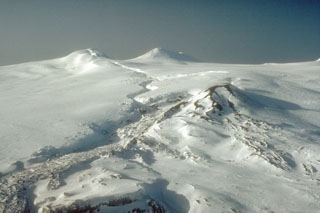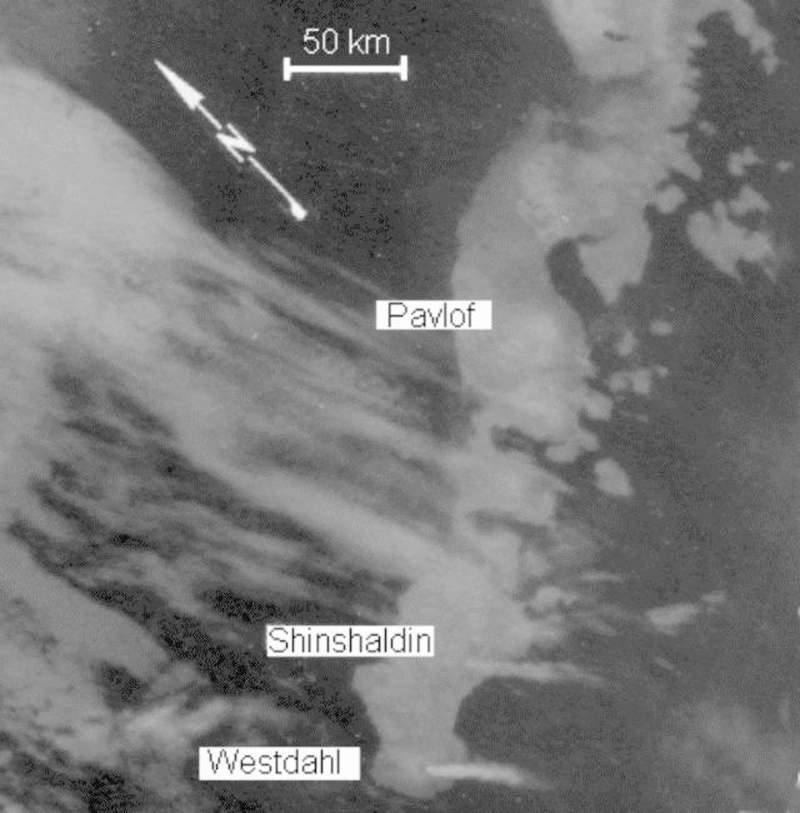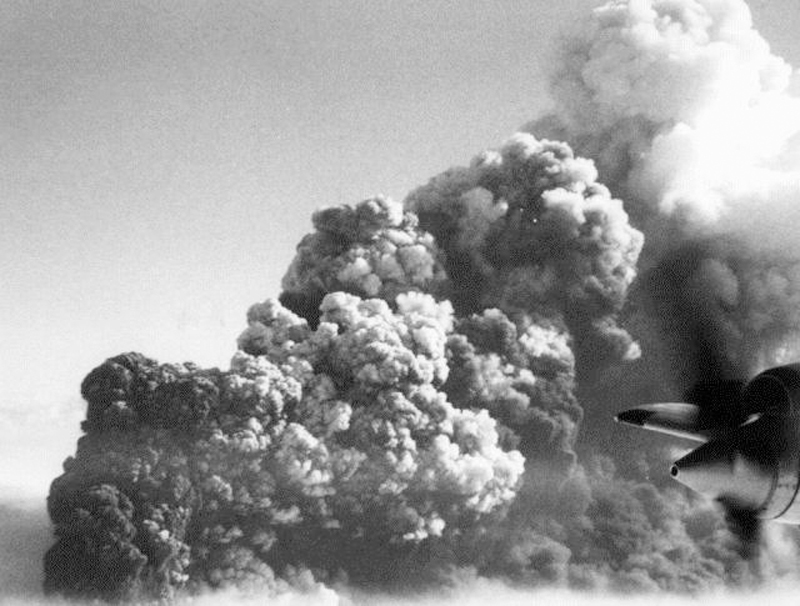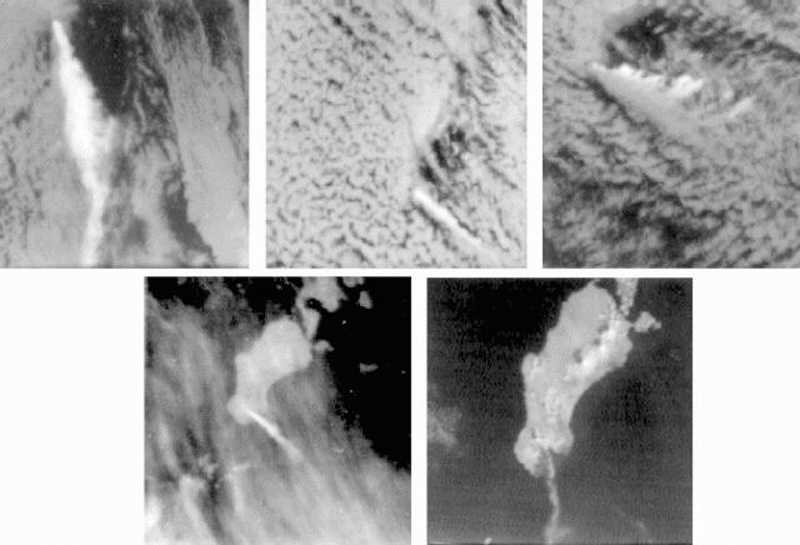Report on Westdahl (United States) — February 1978
Scientific Event Alert Network Bulletin, vol. 3, no. 2 (February 1978)
Managing Editor: David Squires.
Westdahl (United States) Major ash eruption (about six days)
Please cite this report as:
Global Volcanism Program, 1978. Report on Westdahl (United States) (Squires, D., ed.). Scientific Event Alert Network Bulletin, 3:2. Smithsonian Institution. https://doi.org/10.5479/si.GVP.SEAN197802-311340
Westdahl
United States
54.516°N, 164.65°W; summit elev. 1563 m
All times are local (unless otherwise noted)
Data from satellite imagery and aircraft observations established that the eruption originated from the summit of Westdahl, one of five volcanoes on Unimak Island active in historical times. The eruption column was first visible in 5 February satellite imagery (figure 1), but Coast Guard personnel from Scotch Cap (15 km SW of Westdahl's summit) noted a sulfur odor during the evening of the 3rd and reported that ash had begun to fall by the next morning. Eruption column height was estimated at 8-10 km from aircraft observations on 6 February (figure 2) and up to 8 km from interpretation of satellite imagery (figure 3). Nearly 1 m of ash fell at Scotch Cap, forcing evacuation of its personnel and damaging Scotch Cap Light. Meltwater caused stream flooding and washed out the coast road. A Reeve Aleutian Airways pilot observed a new cinder cone, about 100 m in diameter, located near the site of Westdahl's last eruption (March-April, 1964). No lava flow has been observed. Activity declined to steaming after 9 February.
Geological Summary. Westdahl is a broad glacier-covered volcano occupying the SW end of Unimak Island. Two peaks protrude from the summit plateau, and a new crater formed in 1978 cuts the summit icecap. The volcano has a somewhat of a shield-like morphology and forms one of the largest volcanoes of the Aleutian Islands. The sharp-topped, conical Pogromni stratovolcano, 6 km N, rises several hundred meters higher than Westdahl, but is moderately glacially dissected and presumably older. Many satellitic cones of postglacial age are located along a NW-SE line cutting across the summit of Westdahl. Some of the historical eruptions attributed to the eroded Pogromni may have originated instead from Westdahl (Miller et al. 1998). The first historical eruption occurred in 1795. An 8-km-long fissure extending east from the summit produced explosive eruptions and lava flows in 1991.
Information Contacts: J. Kienle, Univ. of Alaska; T. Miller, USGS, Anchorage.




